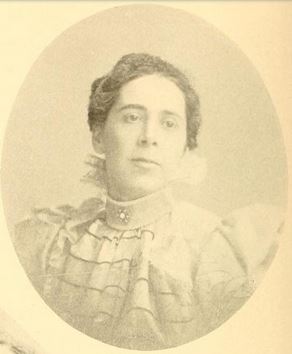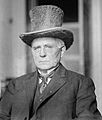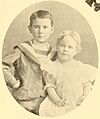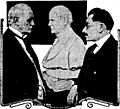Champ Clark facts for kids
Quick facts for kids
Champ Clark
|
|
|---|---|
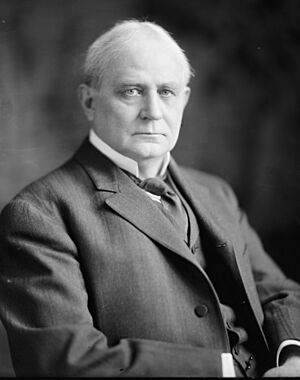 |
|
| 36th Speaker of the United States House of Representatives | |
| In office April 4, 1911 – March 3, 1919 |
|
| Preceded by | Joseph G. Cannon |
| Succeeded by | Frederick H. Gillett |
| Leader of the House Democratic Caucus |
|
| In office March 4, 1909 – March 2, 1921 |
|
| Preceded by | John Sharp Williams |
| Succeeded by | Claude Kitchin |
| Member of the U.S. House of Representatives from Missouri's 9th district |
|
| In office March 4, 1897 – March 2, 1921 |
|
| Preceded by | William M. Treloar |
| Succeeded by | Theodore W. Hukriede |
| In office March 4, 1893 – March 3, 1895 |
|
| Preceded by | Seth W. Cobb |
| Succeeded by | William M. Treloar |
| Personal details | |
| Born |
James Beauchamp Clark
March 7, 1850 Lawrenceburg, Kentucky, U.S. |
| Died | March 2, 1921 (aged 70) Washington, D.C., U.S. |
| Political party | Democratic |
| Spouse | Genevieve Davis Bennett |
| Children | 2 |
| Alma mater | Bethany College University of Cincinnati College of Law |
| Profession | Lawyer |
| Signature |  |
James Beauchamp Clark (born March 7, 1850 – died March 2, 1921) was an American politician and lawyer. He served Missouri in the United States House of Representatives for 13 terms. From 1911 to 1919, he was the Speaker of the House.
Clark was born in Kentucky. He later started a law practice in Bowling Green, Missouri. He held various local and state jobs before being elected to the U.S. House in 1892. He lost his seat in 1894 but won it back in 1896.
In 1908, he became the House Minority Leader. When Democrats gained control of the House in 1910, he became Speaker. He played a role in stopping a trade agreement with Canada in 1911. This was because he suggested the treaty could lead to Canada joining the United States.
Clark was a leading candidate for president in 1912. He had the most support going into the Democratic convention. However, he did not get enough votes to win the nomination. Woodrow Wilson eventually won the nomination and became president. Clark helped Wilson pass many new laws. But he did not agree with the U.S. joining World War I.
In 1918, Democrats lost control of the House. This ended Clark's time as Speaker. He lost his own House seat in 1920. He passed away in March 1921, just two days before his term would have ended.
Contents
Who Was Champ Clark?
James Beauchamp Clark was born in Lawrenceburg, Kentucky. His parents were John Hampton Clark and Aletha Beauchamp. He went to Bethany College and graduated in 1873. He then studied law at Cincinnati Law School, finishing in 1875.
Champ Clark's Career Journey
From 1873 to 1874, Clark was the president of Marshall College. Today, this school is known as Marshall University. In 1875, he became a lawyer. The next year, he moved to Bowling Green, Missouri. There, he started his law practice.
He worked as the city attorney from 1878 to 1881. He was also the prosecuting attorney for Pike County from 1885 to 1889.
Entering Politics
Clark served in the Missouri House of Representatives in 1889 and 1891. He was first elected to the United States House of Representatives in 1892. He lost his seat in 1894 to William M. Treloar. But he won it back in 1896. He stayed in the House until his death in 1921.
In 1903, Clark tried to become the House Minority Leader. But he lost to John Sharp Williams. When Williams left to run for the Senate in 1908, Clark tried again and won. In 1911, the Democrats won control of the House. This made Clark the Speaker.
The Canadian Trade Treaty Debate
In 1911, Clark gave a speech that impacted an election in Canada. He spoke about a trade agreement with Canada. He said, "I look forward to the time when the American flag will fly over every square foot of British North America up to the North Pole."
Clark suggested that this trade agreement was the first step for Canada to join the United States. The Congressional Record reported that his speech was met with "prolonged applause." The Washington Post also noted that Democrats seemed to agree with his idea.
However, the Chicago Tribune criticized Clark. They said his speech might harm the treaty in Canada. The newspaper wrote that his comments "grate harshly on the ears of the smaller" country. The Conservative Party of Canada was against the treaty. They won the Canadian election largely because of Clark's speech.
Later Political Years
In 1912, Clark was a top candidate for the Democratic presidential nomination. He had the most support going into the convention. But he could not get the two-thirds vote needed to win. After many votes, Woodrow Wilson became the Democratic nominee instead. Wilson then won the 1912 presidential election.
As Speaker, Clark was good at keeping his party together. He helped block laws from President William Howard Taft. Then he helped pass laws for President Wilson. However, Clark disagreed with Wilson in 1917 and 1918. He did not want the United States to join World War I.
Clark also opposed the Federal Reserve Act. This law created a central banking system. Some say his opposition is why Missouri has two Federal Reserve Banks. One is in St. Louis and one is in Kansas City.
Clark lost his House seat in the 1920 election. He passed away soon after in his home in Washington, D.C..
The small town of Champ, Audrain County, Missouri is named after him. The former Clark National Forest was also named in his honor.
Champ Clark's Family Life
Champ Clark married Genevieve Bennett Clark on December 14, 1881. They had two children together. Their son was Joel Bennett Clark. He became a United States senator for Missouri from 1933 to 1945. Their daughter was Genevieve Clark Thomson. She was a suffragette and ran for the House of Representatives in Louisiana.
Clark was a member of the Disciples of Christ church.
Champ Clark Bridge
A bridge in Louisiana, Missouri, connects Missouri to Illinois. It was first built in 1928 and named after Champ Clark. In late 2019, a new bridge with the same name was built to replace the older one.
Images for kids
-
Speaker Clark (left) with Representative James R. Mann of Illinois
-
Champ Clark's casket being loaded into a hearse outside the United States Capitol, flag at half staff, March 5, 1921
-
Clark about a month before his death, wearing an antique-style beaver hat.
-
Clark's former residence in Washington, D.C.
See also
- List of United States Congress members who died in office (1900–49)



